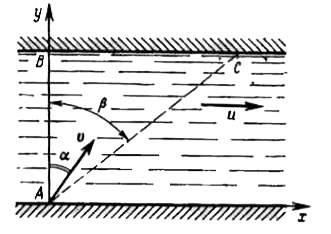The speed of a motor launch with respect to water in a stream is 8ms−1 while water current's speed is 3ms−1. When the launch began travelling upstream, a float was dropped from it. After travelling a distance of 4.8km upstream, the launch turned back and caught up with the float. What is the total time which elapsed during the process?
Step by step video & image solution for The speed of a motor launch with respect to water in a stream is 8 ms^(-1) while water current's speed is 3 m s^(-1). When the launch began travelling upstream, a float was dropped from it. After travelling a distance of 4.8 km upstream, the launch turned back and caught up with the float. What is the total time which elapsed during the process? by Physics experts to help you in doubts & scoring excellent marks in Class 11 exams.
Topper's Solved these Questions
- BOOK - SL ARORACHAPTER - MOTION IN ONE DIMENSIONEXERCISE - problem19videos
MOTION IN ONE DIMENSION
- BOOK - SL ARORACHAPTER - MOTION IN ONE DIMENSIONEXERCISE - problems for self practice66videos
MOTION IN ONE DIMENSION
- BOOK - SL ARORACHAPTER - Motion in a PlaneEXERCISE - Excercise397videos
Motion in a Plane
- BOOK - SL ARORACHAPTER - OSCILLATIONSEXERCISE - Exercise233videos
OSCILLATIONS
Similar Questions
The speed of a motor launch with respect to still water in a stream is 8ms−1 while water current's, speed is 3ms−1. When the launch began travelling upstream, a float was dropped from it. After travelling a distance of 4.8km upstream, the launch turned back and caught up with the gloat. What is the total time which elapsed during the process?
View SolutionThe speed of a motor launch with respect to the water is v=7 m/s, the speed of the stream u=3m/s. When the lasunch began travelling up-stream, a float was droped from it. The launch travelled 4.2 km up -stream, turned about and caught up with the float.

How long is it before the launch reaches the float again?View Solution
Knowledge Check
- Question 1 - Select One
A boat takes 9 h to travel a distance upstream and takes 3 h to travel the same distance downstream. If the speed of the boat in still water is 4 km/h, then what is the velocity of the stream?
Aa. 4 km/hBb. 3 km/hCc. 6 km/hDd. 2 km/h - Question 2 - Select One
Raj travels a distance of one kilometre at a speed of 1 m/s and 4 km at a speed of 30 km/h. Find the total time taken to cover the entire distance (in seconds).
A1480B900C950D1050 - Question 3 - Select One
What is the speed of the stream?
I. The ratio of speed in upstream to the speed in downstream is 2:3
II. The distance travelled in upstream in 2 hours by a man is more than distance travelled by him in downstram in 1 hour by 4 km.AThe data in Statement I alone are sufficient to answer the quenstion, while the data in statement II alone are not sufficient to answer the question.BThe data in statement I alone or in statement II alone are sufficient to answer the question.CThe data either in statement I alone or instatement II alone are sufficient to answer the questionDThe data even in both the statements I and II together II alone not sufficient to answer the question.
Find the speed of a motor launch, if the water in the Pitot-Prandtl tube has risen to a height of 1.8 m.
View SolutionSpeed of a boat in still water is 10 km/h and the speed of the stream is 5 km/h. Find the total time taken to travel a distance of 20 km upstream and 30 km downstream
View SolutionSpeed of a boat in still water is 10 km/h and the speed of the stream is 5 km/h. Find the total time taken to travel a distance of 20 km upstream and 30 km downstream
View SolutionA boat rescued people drowning in a river during a flood, with maximum of 5 people at a time 7 people were holding a rock in middle of water flow. The boat arrives and picks 5 of them and left 2 people holding the rock. When the boat began to travel upstream, 2 people holding the rock, left hold of it and start flowing with the water flow. The boat travels 2 km upstream, left the 5 people, turned about and caught with the 2 people drowning. how long will it take the boat to reach those 2 people?
Take, speed of boat w.r.t. to still water =10m/s
Speed of water flow =2m/sView SolutionA motorboat travels with speed of 36 km./hr. in still water. It takes 1 hour 45 min. in travelling 56 km upstream and what time will it take to travel same distance downstream ?
View Solution

